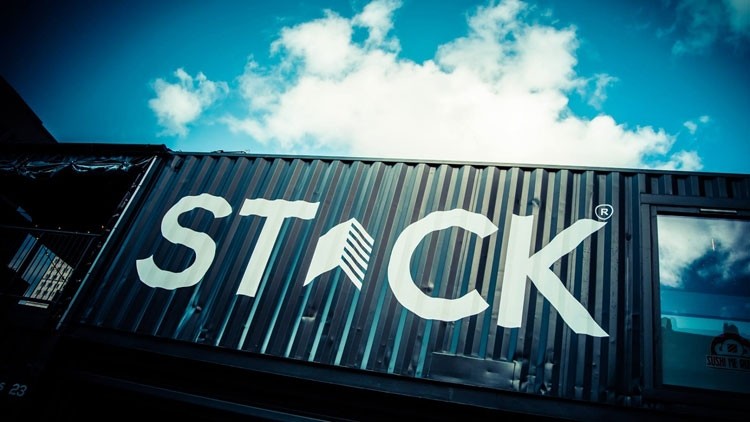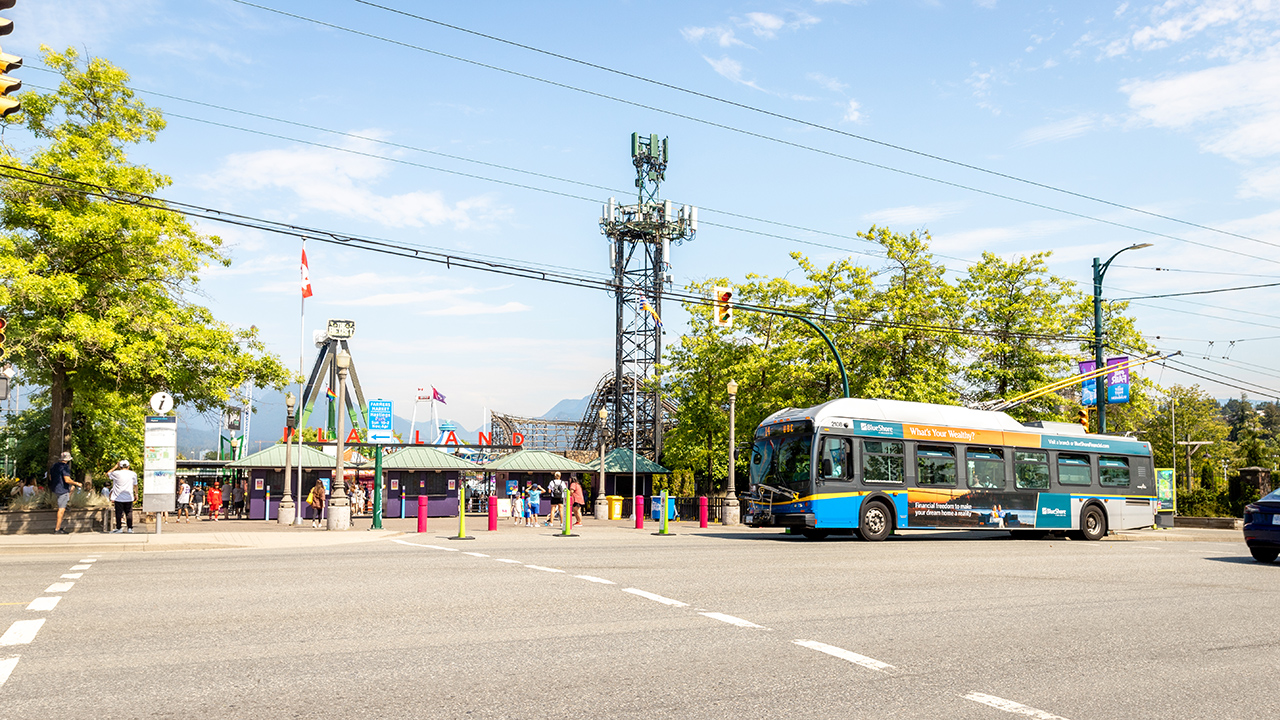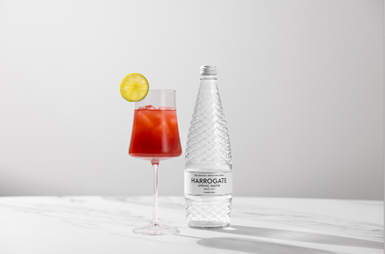Stress-responsive Gdf15 counteracts renointestinal toxicity via autophagic and microbiota reprogramming

Analysis using clinical transcriptome-based datasets
Renal gene expression was assessed in patients with AKI (gse30718, n = 47) or CKD (gse66494, n = 61). Gene expression analysis of human kidneys with AKI is limited since such kidneys are seldom biopsied66. Given the limited supply of kidney biopsy samples from patients with AKI, patients with kidney explants were followed up as models of human AKI66. Since all subjects with kidney transplants experience AKI, early kidney transplants without rejection are an excellent model for human AKI. Biopsies from transplants with AKI (gse30718) were compared with those from the pristine protocol biopsies of stable transplants.
Patients with CKD display irreversible and progressive loss of nephrons, followed by glomerular fibrosis, tubular atrophy, and tubulointerstitial fibrosis, which are commonly observed features of human progressive renal diseases, irrespective of the initial etiologies67. Biopsy specimens from 48 patients with histopathologically confirmed CKD (gse66494) were analyzed to identify genes responsible for tubulointerstitial fibrosis and tubular cell injury using two independent discovery and validation processes67. The patients exhibited various histological types of renal diseases including IgA nephropathy (n = 15), membranous nephropathy (n = 7), lupus nephritis (n = 6), minimal change nephrotic syndrome (n = 3), membranoproliferative glomerulonephritis (n = 3), amyloidosis (n = 3), antineutrophil cytoplasmic antibody-related glomerulonephropathy (n = 2), diabetic nephropathy (n = 2), and other nephropathies (n = 6).
Cell culture
In the present study, we employed the human intestinal epithelial cell line HCT-8 and human kidney cells (HK-2 and HEK293). The mycoplasma-free cell lines were purchased from American Type Culture Collection and maintained in RPMI 1640 or DMEM medium (Welgene) supplemented with 10% (v/v) heat-inactivated fetal bovine serum (Welgene), 50 U/mL penicillin, and 50 µg/mL streptomycin (Welgene) at 37 °C in a humidified 5% CO2 incubator. Cells were seeded at a density of 5×105 cells in a 60 mm dish, and the culture medium was replenished when cells achieved confluency. After replenishing the medium for 12 h, CP (10 μmol/L) in normal saline was added to the cell culture for 24 or 48 h. Subsequently, cells were harvested for protein and RNA extraction. CP powder was purchased from Sigma-Aldrich (#PHR1624), and stock solutions were prepared in normal saline. Cell counting and viability were assayed using the dye exclusion test with Trypan blue dye (Merck) with a hemocytometer.
Chemically induced acute renointestinal injury models
The procedure was based on the previously published method68. In detail, C57BL/6 mice (6-week-old male, average weight 16–18 g) were purchased from Jackson Laboratories (Bar Harbor, ME, USA), and Gdf15 KO C57BL/6 mice were kindly provided by Dr. Se-Jin Lee (Johns Hopkins University, Baltimore, MD, USA). All mice of the same age were placed in one cage and randomly transferred to different cages without bias. Mice were randomly assigned to specific treatment groups. The mice were acclimatized for 14 days before experimentation and maintained at 22 ± 2 °C under 45–55% relative humidity, with a 12/12 h light/dark cycle. Three mice were housed per cage and provided sufficient food and water in environmentally protected cages, comprising a transparent polypropylene body and stainless-steel top cover. Chemotherapy-induced AKI was induced by an intraperitoneal injection of cisplatin (20 mg/kg). Eight-week-old wild-type and Gdf15 KO mice were treated with vehicle or CP (20 mg/kg, intraperitoneally) for 72 h (n = 4 − 5). To induce DSS-induced colitis and renal complications, seven-week-old male mice were treated with 3% DSS (molecular weight 36,000–50,000 Da; MP Biomedical, Solon, OH, USA) ad libitum in drinking water for eight days. Two days later, the mice were sacrificed under deep ether anesthesia.
Histopathology
The procedure was based on the previously published method68,69. Briefly, kidney sections were stained with PAS, and microphotographs of prepared sections were obtained using an inverted microscope (Nikon-Eclipse Ts2R, Tokyo, Japan). The images obtained were quantified using Adobe Photoshop CS6 and Multi Gauge V3.0. One portion of the harvested kidney was fixed in 4% PFA at 4 °C, embedded in paraffin wax, and stained with PAS; the other part was segmented into two portions for RNA and protein isolation, snap-frozen in liquid nitrogen at -120 °C for 10–15 min, and homogenized on the day of organ harvest. The degree of renal tubular injury was expressed as the proportion of damaged renal tubules70. For statistical analysis, the visual fields of each specimen were randomly selected, and tubule diameters and lumen diameters were photographed under the microscope, and the lesions were statistically analyzed by ImageJ software. Tubule diameters were measured from the basal membrane across the narrowest segment of a tubule to the basal membrane of the opposite side. Lumen diameters were determined by measuring the distance between the apical membranes across the narrowest portion of a tubule. The levels of tubular vacuolization were assessed by grading levels of vacuoles affecting proximal tubules and extending to the basement membrane71. The cystic index was calculated as the percentage of cystic area relative to the total kidney area72.
The procedure was based on the previously published method68,69. For gut analysis, the small intestine was immediately removed, fixed in Carnoy’s solution, and embedded in paraffin. The sections were dewaxed using xylene, rehydrated using a series of graded alcohol solutions, and stained with hematoxylin and eosin (H&E) using an established laboratory protocol to reveal histopathological lesions. Villous and crypt lengths of the jejunum and ileum were measured using a micrometer. At least nine villi from each section were measured and averaged for each group. Morphological evaluation was performed in a blinded manner using well-established criteria. In brief, H&E-stained cross‐sections of small intestinal tissues were scored on a 0–4 scale to determine histopathological severity based on the following criteria: 0, no change from normal tissue; Grade 1, mild inflammation present in the mucosa, comprising mainly mononuclear cells, with little epithelial damage; Grade 2, multifocal inflammation exceeding a Grade 1 score, with mononuclear and few polymorphonuclear cells (neutrophils), crypt glands pulled away from the basement membrane, mucin depletion from goblet cells, and the epithelium occasionally pulled away from the mucosa into the lumen; Grade 3, multifocal inflammation exceeding a Grade 2 score, including mononuclear cells and neutrophils progressing into the submucosa, crypt abscesses present with increased mucin depletion, and presence of epithelial disruption; Grade 4, absence of crypts, severe mucosal inflammation mainly composed of neutrophils, and epithelium no longer present or completely detached. For each mouse, the average of three fields of view was examined per small intestine sample. All evaluators were blinded to the present experimental information.
Alcian blue staining
The procedure was based on the previously published method68,69. The prepared tissue sections were deparaffinized in xylene for 10 min, rehydrated in ethanol (100, 90, 80, 70, and 50%) for 3 min each, and then placed in distilled water for 10 min. AB 8GX (1% [w/v] alcian blue 8GX, Biosesang, Seoul, Korea) solution was applied to sections for 30 min at 25 °C, followed by a 2 min wash under running tap water. Counterstaining was performed for 5 min with 0.1% (w/v) nuclear Fast Red, followed by washing for 2 min under running tap water. Subsequently, the stained sections were dehydrated in two changes of 95% ethanol and two changes of absolute alcohol. The dried sections were cleared using xylene for a few minutes and then mounted using a synthetic mountant (Thermo Fisher Scientific, Seoul, Korea).
Tissue detection of the mucosal microbiota
Gram staining was performed as follows45: tissue sections were deparaffinized in xylene, rehydrated in ethanol, incubated in dH2O for 5 min, stained for 1 min using crystal violet, and then washed under tap water. Slides were then stained with Gram’s iodine for 1 min, rinsed under tap water, dipped in 95% ethyl alcohol for 5–10 s, and rinsed again under tap water. The slides were stained again for 1–2 min in safranin and rinsed under tap water. Stained sections were rapidly dehydrated in two changes of 95% ethanol, followed by two changes of absolute alcohol, cleared in xylene, and mounted in a synthetic mountant (Thermo Fisher Scientific, Korea). The safranin stains decolorized gram-negative cells red/pink, while the gram-positive bacteria remained blue.
In situ detection using probes for 16 S rRNA was performed as follows: tissues were deparaffinized with xylene and rehydrated through an ethanol gradient to water. Sections were incubated with a universal Cy3-labelled bacterial probe directed against the 16 S rRNA gene (5′-GCT GCC TCC CGT AGG AGT-3′) at 50 °C overnight and counterstained with DAPI for nuclear staining.
Serum creatinine and urea nitrogen levels
The procedure was based on the previously published method68. The creatinine level was measured using the Creatinine Serum Detection Kit (KB02-H2, Arbor Assays, MI, USA) according to the manufacturer’s instructions. Briefly, mice were anesthetized with 30 µL of isoflurane (Hana Pharm Co., Seoul, Korea), and blood was collected by performing a retro-orbital sinus puncture into a 1.5 mL tube containing 10 μL of 0.5 M EDTA, which was subsequently centrifuged at 1000× g for 15 min to separate the plasma, followed by storage at -80 °C. Before performing the assay, all samples were centrifuged at 18,341× g for 15 min. Then, standard solutions (25 μL) with known concentrations of creatinine stock, blood samples, or water (blank) diluted with 25 μL of assay diluent were mixed with 100 μL of DetectX Creatinine Reagent in a 96-well microplate and incubated for 30 min. Optical density was measured using a microplate reader at a wavelength of 490 nm. BUN was measured using a urea nitrogen colorimetric detection kit (KB024-H1, Arbor Assays) according to the manufacturer’s instructions. Briefly, obtained plasma was centrifuged at 18,341× g for 10 min and diluted in distilled water (1:20). Then, 50 µL of samples or appropriate standards were pipetted into a 96-well plate in duplicates. Next, 75 µL of color reagents A and B was added to each well using a repeater pipette. The plate was incubated at 25 °C for 30 min, and optical density was measured at 450 nm.
Western blot analysis
Briefly, kidney samples were lysed in 1 mL of modified lysis buffer (1% [w/v] sodium dodecyl sulfate [SDS], 1.0 mM sodium orthovanadate, and 10 mM Tris; pH 7.4) containing stainless-steel beads (5 mm) and homogenized for 3 min using a TissueLyser II (Qiagen). The lysates were clarified by centrifugation at 13,475× g for 10 min at 4 °C and quantified using a BCA Protein Assay Kit (Pierce, Rockford, IL, USA). Equal amounts of protein (30 μg) were separated using SDS-polyacrylamide gel electrophoresis (8% gel for anti-PARP 1/2, 15% gel for anti-cleaved caspase-3) in a Bio-Rad gel mini electrophoresis system (Bio-Rad, Hercules, CA, USA). The proteins were transferred onto a polyvinylidene difluoride membrane (0.45 μm; EMD Millipore Corporation, Billerica, MA, USA) and then blocked with 5% skim milk in Tris-buffered saline plus 0.1% Tween (TBST) for 1 h. Subsequently, the membranes were incubated with the desired primary antibody overnight at 4 °C. After washing three times with TBST, the blots were incubated with horseradish peroxidase (HRP)-conjugated secondary antibody for 2 h, followed by washing with TBST three times for 30 min. Antibody binding was detected using an enhanced chemiluminescence substrate (ELPIS Biotech, Daejeon, Korea). The following antibodies were used for western blotting: mouse monoclonal anti-β-actin (1:1000; SC4778, Santa Cruz Biotechnology, Santa Cruz, CA), rabbit polyclonal anti-PARP1/2 (1:1000; SC7150, Santa Cruz Biotechnology), and rabbit polyclonal anti-Gdf15 (Abclonal, Woburn, MA, USA). The secondary antibodies used were HRP-conjugated goat anti-rabbit IgG, polyclonal antibody (ADI-SAB-300-J, Enzo Biochem Inc. Farmingdale, NY, USA), and goat anti-mouse IgG (BML-SA204, Enzo Biochem Inc. Farmingdale, NY, USA).
Conventional and reverse transcription-quantitative polymerase chain reaction
The procedure was based on the previously published method68,69. Frozen tissues were homogenized in 1 mL RiboEx solution (GeneAll Biotechnology, Seoul, Korea) containing stainless-steel beads (5 mm) for 3–6 min using a TissueLyser II (Qiagen). Total RNA was extracted using RiboEx (GeneAll Biotech, Seoul, South Korea), according to the manufacturer’s instructions. Subsequently, RNA (500 ng) from each sample was transcribed to cDNA using a TOPscript RT DryMIX cDNA synthesis kit (Enzynomics, Daejeon, Korea). cDNA was amplified using N-Taq DNA polymerase (Enzynomics) in a MyCycler Thermal Cycler (Bio-Rad) using the following parameters: denaturation at 95 °C for 5 min, followed by 25 cycles of denaturation at 95 °C for 10 s, annealing at 60 °C for 15 s, and elongation at 72 °C for 30 s. The following primers were used for PCR: human GAPDH, 5′-TCA ACG GAT TTG GTC GTA TT-3′ and 5′-CTG TGG TCA TGA GTC CTT CC-3′; human MUCIN2, 5′-TTA CCC ACT GCG TGG AAG AC-3′ and 5′-GCA TTC CCG TGA ACA CAC AC-3′; human MUCIN4, 5′-GAC GAC TTC AGG ATG CCC AA-3′ and 5′-AGG GCC AGG GTG TCA TAG AT-3′; human Gdf15, 5′-ACG CTA CGA GGA CCT GCT AA-3′ and 5′-AGA TTC TGC CAG CAG TTG GT-3′; human GABARAPL1, 5′- AGG AGG ACC ATC CCT TTG AGT A-3′ and 5′- TCC TCA GGT CTC AGG TGG ATT-3′; human PPARγ, 5′- TTC AGA AAT GCC TTG CAG TG-3′ and 5′- CAC CTC TTT GCT CTG CTC CT-3′. An aliquot of each polymerase chain reaction (PCR) product was subjected to 1.2% (w/v) agarose gel electrophoresis and was visualized by staining with ethidium bromide. For real-time PCR, cDNA was amplified using SYBR green (SG, TOPreal™ qPCR 2X PreMIX, Enzynomics), performed with Rotor-Gene Q (Qiagen, Hilden, Germany) using the following parameters: denaturation at 94 °C for 2 min, followed by 40 cycles of denaturation at 98 °C for 10 s, annealing at 59 °C for 30 s, and elongation at 98 °C for 45 s. Each sample was evaluated in triplicates to ensure statistical robustness. Relative quantification of gene expression was performed using the comparative Ct method, in which the Ct value was defined as the point at which a statistically significant increase in fluorescence was observed. The number of PCR cycles (Ct) required for the fluorescence intensities to exceed a threshold value immediately above the background level was calculated for the test and reference reactions. GAPDH was used as an internal control for all experiments.
Confocal microscopy
Cells transfected with pDEST-CMV mCherry-GFP-LC3B WT (a gift from Robin Ketteler, Addgene plasmid # 123230, Watertown, MA, USA) were exposed to different treatments. Cells were washed with PBS and then the coverslips were carefully placed and slight pressure was applied to remove the remaining bubbles. Confocal images were obtained with an Andor BC43 Benchtop confocal microscope (Andor, Belfast, UK) at the single-line excitation (529 nm for GFP, or 600 nm for mCherry). Images were acquired with the Fusion software (Andor) and processed with the Imaris software (Andor).
Analysis of the autophagy regulatory network (ARN)
PPI network analysis was performed using the search tools for the retrieval of interacting genes (STRING) ( and ARN databases, which cover various evidence-based autophagy machinery-linked components, their regulators, transcription factors, miRNA regulators, and signaling network connectors in multi-layered illustration40. The betweenness centrality of node x was calculated using function g(x).
$${{{{{\rm{g}}}}}}(x)={\sum }_{s\ne x\ne t}{{{{{{\rm{\sigma }}}}}}}_{{st}}(x)/{{{{{{\rm{\sigma }}}}}}}_{{st}}$$
(1)
where \({{{{{{\rm{\sigma }}}}}}}_{{st}}\) is the total number of shortest paths from node s to node t, and \({{{{{{\rm{\sigma }}}}}}}_{{st}}\left(x\right)\) is the number of paths that pass through node x (not where x is an endpoint).
Stool sample collection and DNA extraction
The procedure was based on the previously published method68,69. Eight-week-old wild-type and Gdf15 KO mice were treated with vehicle or CP (20 mg/kg, intraperitoneally) for 72 h (n = 4 − 5). Fecal samples (5 − 6 pieces; 100 mg) were collected before animal sacrifice. The collected stool samples were stored at -150 °C before DNA extraction. Microbial DNA was extracted and purified from 100 mg of the fecal sample using the Exgene Stool DNA mini kit (GeneALL, Seoul, Korea), according to the manufacturer’s instructions. The extracted DNA was quantified using a Qubit fluorometer and high-sensitivity dsDNA reagent kit (Invitrogen, Carlsbad, CA, USA).
Amplification of 16 S rRNA genes and library preparation
The procedure was based on the previously published method68,69. Thirteen DNA samples were pooled as treatment groups for 16 S metagenomic library preparation. The V3–V4 region of the 16 S rRNA gene was PCR-amplified with a primer set (341 F, 5′-CCTACGGGNGGCWGCAG-3′; 805 R, 5′-GACTACHVGGGTATCTAATCC-3′) and Illumina sequencing adaptors (Illumina Inc.) using the KAPA HiFi HotStart Ready Mix (KAPA Biosystems, Wilmington, WA, USA) under the following cycling conditions: initial denaturation 95 °C for 3 min, followed by 25 cycles of denaturation at 95 °C for 30 s, annealing at 55 °C for 30 s, extension at 72 °C for 30 s, and a final extension at 72 °C for 5 min. After amplicon purification using AMPure® XP beads (Agencourt Biosciences, Beverly, MA, USA), the PCR products were verified for library size using a BioAnalyzer (Agilent Technologies, Palo Alto, CA, USA), and the quantity was measured using a Qubit fluorometer. The PCR amplicon was then subjected to indexing PCR using the Nextera XT Index Kit (Illumina, Inc.). The PCR cycling conditions were as follows: 95 °C for 3 min, followed by eight cycles of denaturation at 95 °C for 30 s, annealing at 55 °C for 30 s, extension at 72 °C for 30 s, and a final extension at 72 °C for 5 min. The indexed PCR amplicons were purified using AMPure® XP beads, verified for size using a bioanalyzer, and quantified using a Qubit fluorometer. The quantified amplicons were diluted to 4 nM and pooled for sequencing on an Illumina iSeq platform (Illumina, Inc.), targeting 2× 150 bp paired-end sequence reads.
Microbiome data processing
The procedure was based on the previously published method68,69. All sequences were quality-filtered, and primers were trimmed using Trimmomatic (v0.39)73 with the following parameters: LEADING:3 TRAILING:3 MINLEN:36 SLIDINGWINDOW:4:15. The read pairs that passed the quality filter were further analyzed using the Quantitative Insights into Microbial Ecology 2 (QIIME2, v2020.2) pipeline74. Thirty-four bases of the reverse reads were truncated for quality improvement using the DADA2 algorithm75. The read pairs were then joined, denoised, and dereplicated, and chimeras were removed. Detailed data were used to refer to ASVs. Representative 16 S rRNA sequences were assigned to taxonomic groups using the QIIME2 naive Bayes classifier, trained on 99% operational taxonomic units (OTUs) and the primer region from the SILVA rRNA database (v138)76. Taxonomic classification was visualized using the QIIME2 taxon barplot plugin. Representative 16 S rRNA sequences were subjected to masked multisequence alignment using MAFFT77,78. A phylogenetic tree was constructed using FastTree79. A heatmap depicting the percentage abundance of OTUs, the relative abundance of which was in the top 30 in any sample, was generated using the R package QIIME2R (v0.99.22). A phylogenetic tree based on the abundant OTUs was constructed and visualized using the neighbor-joining algorithm with Jukes-Cantor correction using MEGA X80. The 16 S rRNA sequence dataset was further analyzed using PICRUSt2 to predict metagenome-associated functions, such as enzymes and pathways related to mucin metabolism.
Statistics and Reproducibility
Statistical analysis was performed using the GraphPad Prism 6 software (GraphPad Software, La Jolla, CA, USA). The Student’s t-test was used for the comparative analysis of two data groups. To compare multiple groups, data were subjected to analysis of variance (ANOVA) with the Newman–Keuls method performed as a posthoc ANOVA assessment. Pearson’s correlation analysis was performed to determine the correlation coefficient (R) of clinical datasets. All evaluations are representative of two or three independent experiments. Details of the number of biological replicates and assays are provided in figure legends.
Study approval
This animal study was approved by the Pusan National University Institutional Animal Care and Use Committee (PNU-IACUC, Busan, Korea) (PNU-2019-2365) and was performed under the Declaration of Helsinki and with the Guide for the Care and Use of Laboratory Animals as adopted and promulgated by the United States National Institutes of Health.
Reporting summary
Further information on research design is available in the Nature Portfolio Reporting Summary linked to this article.













